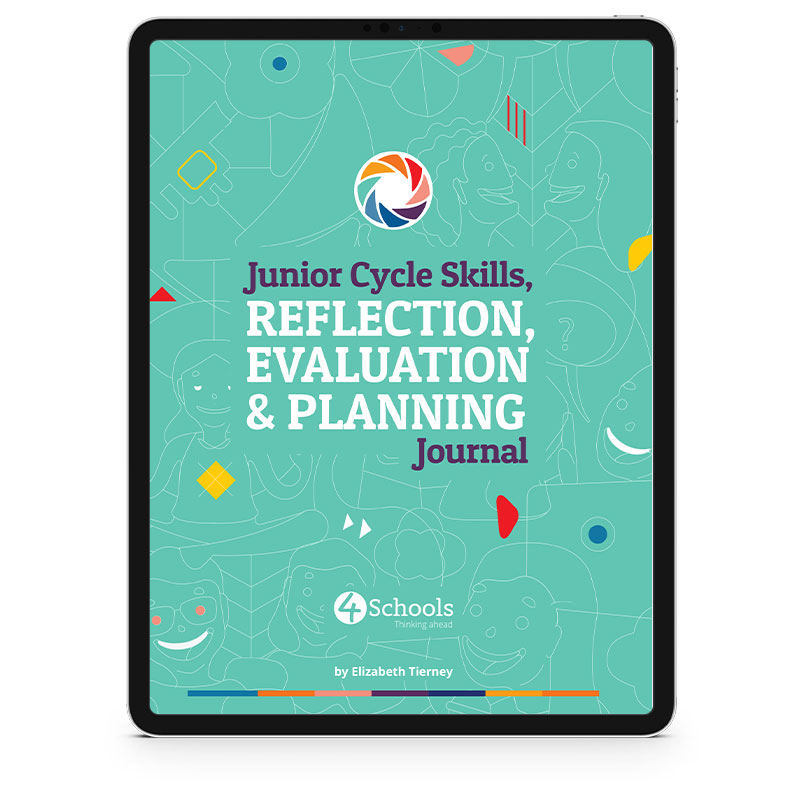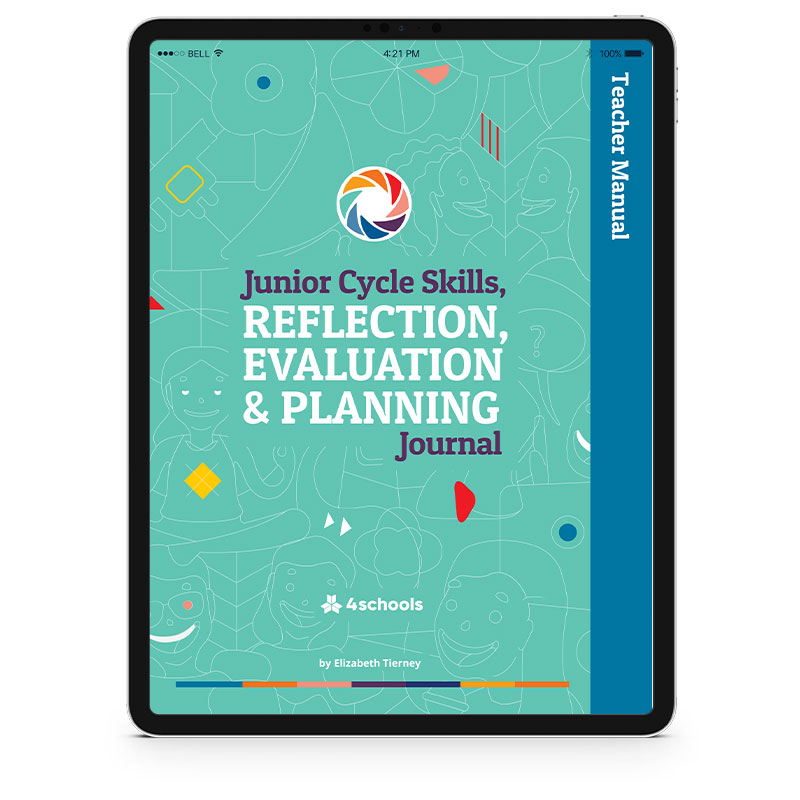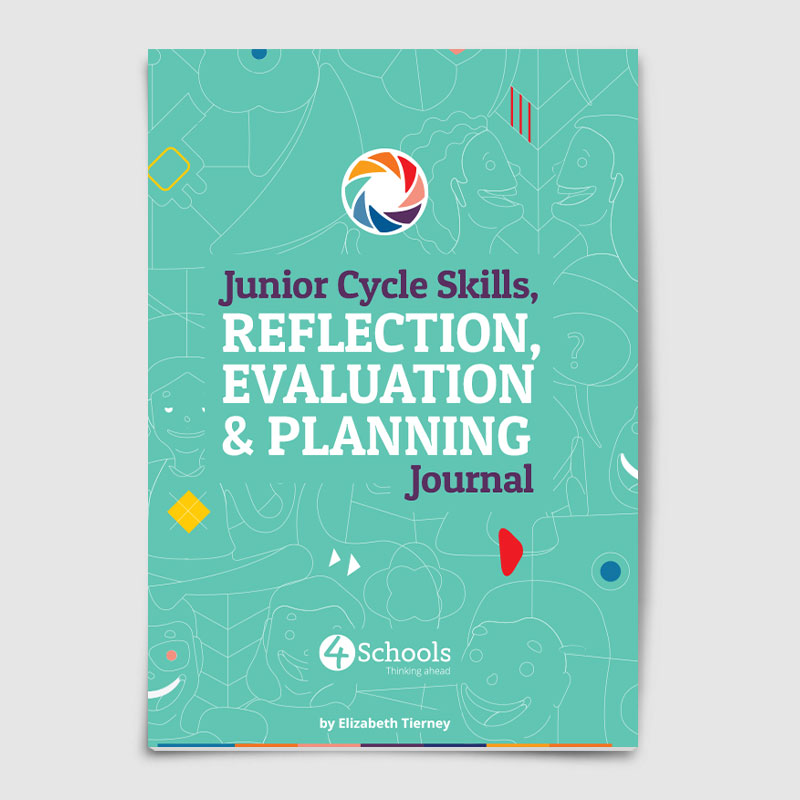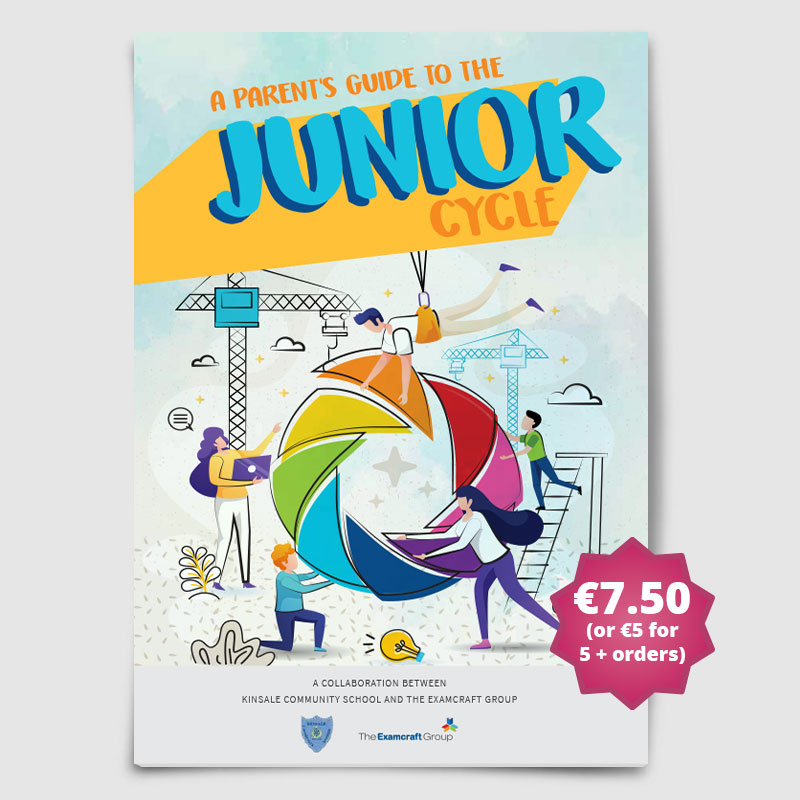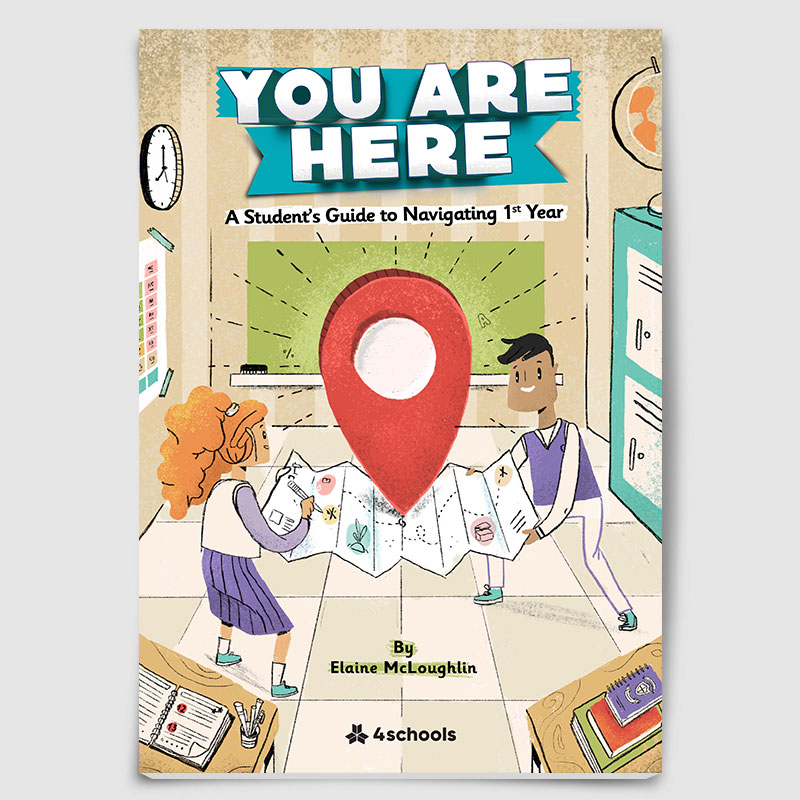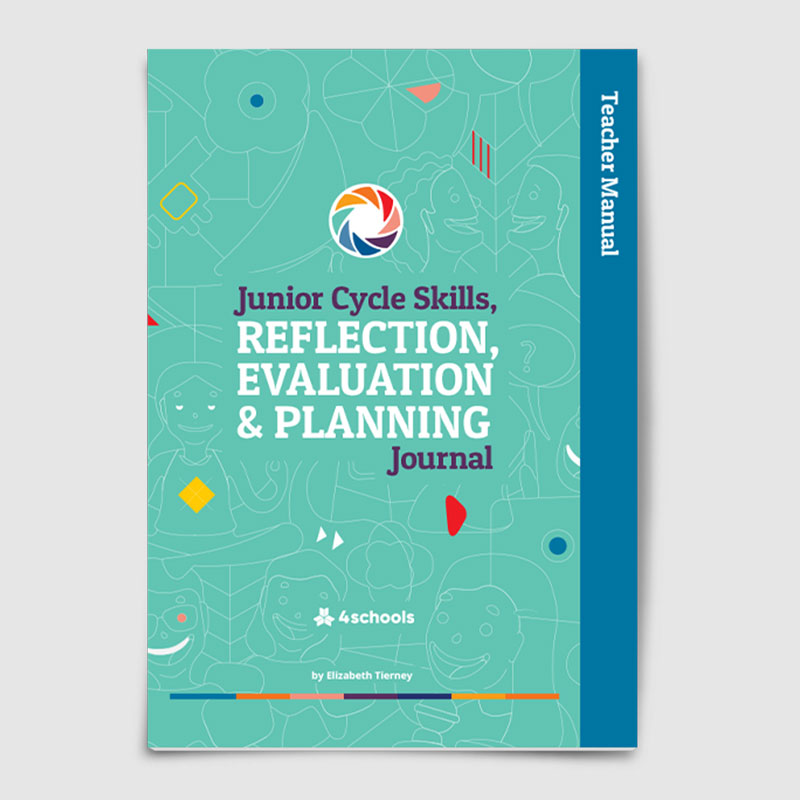
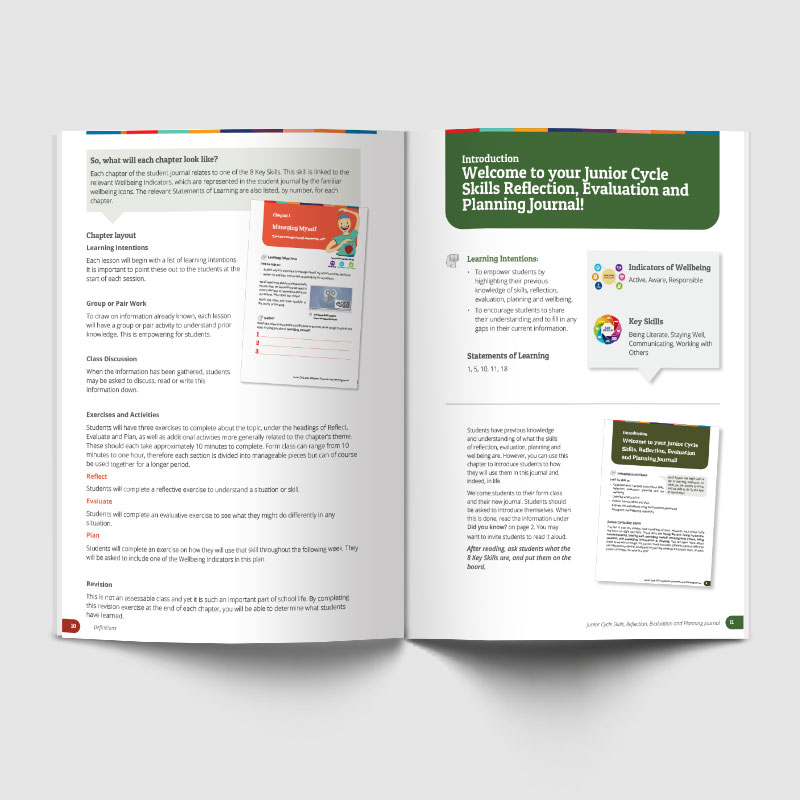
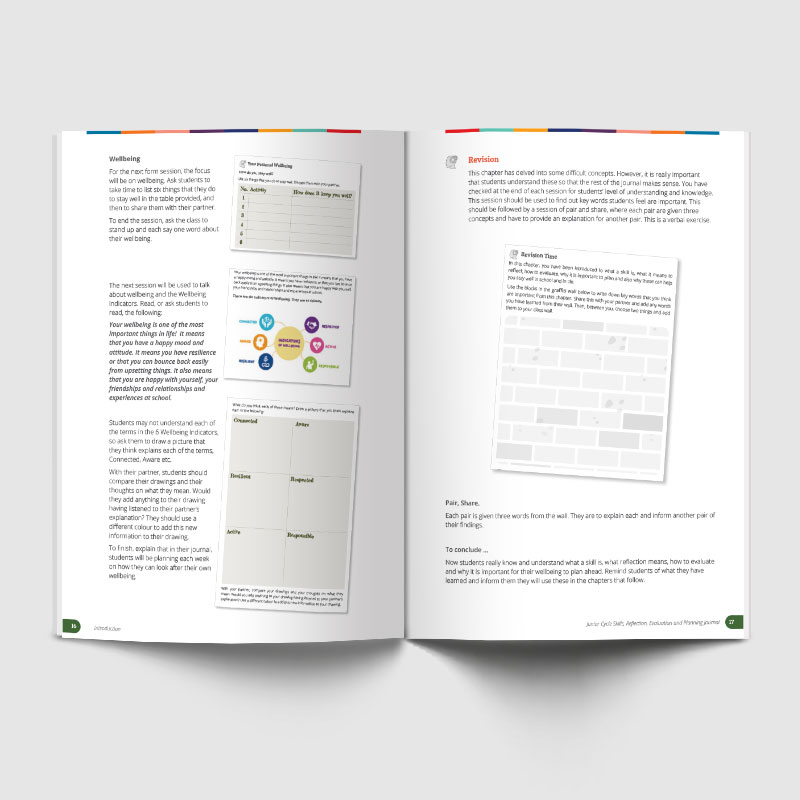
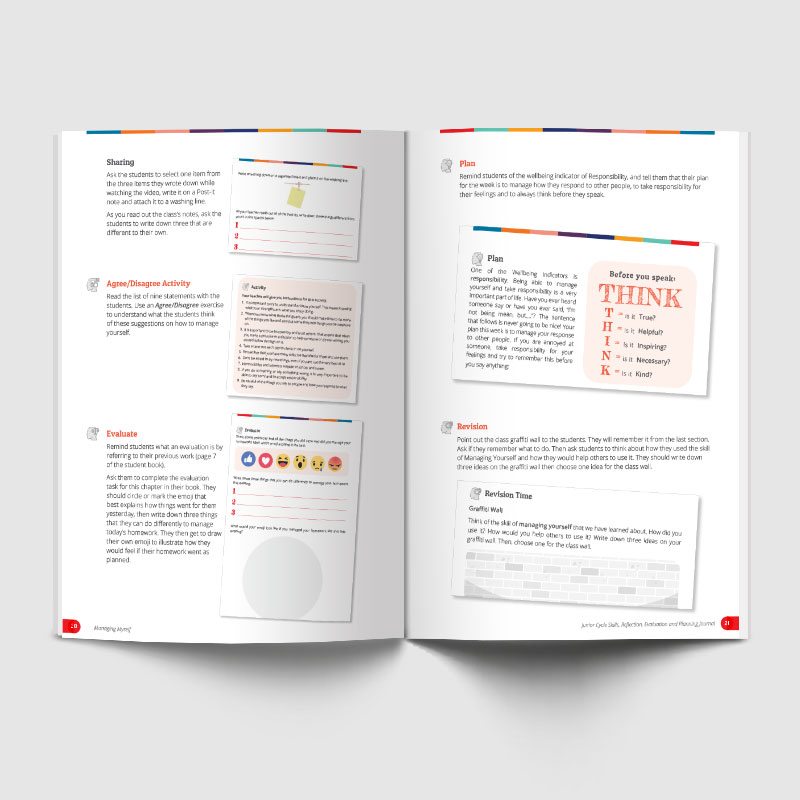
Junior Cycle Skills Reflection, Evaluation and Planning Journal (Teacher Manual)
Publisher
4Schools
Teacher Manual
- With few programmes available for teachers to use during form class time, the Junior Cycle Skills, Reflection, Evaluation and Planning Journal is designed to help teachers in supporting their students to develop new skills and use form classes productively.
- The aim of the programme is to provide structured learning during tutor time through bite-sized activities that maintain constant focus on the Key Skills of the Junior Cycle and the Indicators of Wellbeing.
- The teacher manual outlines everything that is required to deliver a unit of learning and is structured in such a way that any member of staff could deliver the programme.
- Each chapter of the journal focuses on one of the eight Key Skills and is supported with the learning intentions and lesson guidelines for each chapter in the teacher manual.
- The layout of each chapter follows the same structure, where teachers are guided to encourage students to reflect, evaluate, engage in an activity based on a Key Skill, plan for the week ahead and revise the skill they have learned and practised.
- The teacher manual is free for schools that adopt the programme, otherwise it is €10.
€10.00
Why is the Junior Cycle Skills Reflection, Evaluation and Planning Journal beneficial to your school?
- The programme introduces and reinforces the eight Key Skills of the Junior Cycle and develops clarity around the Junior Cycle Statements of Learning for students.
- It is ideal for first years and can be used throughout the Junior Cycle.
- The journal assists student reflection, evaluation and planning.
- The programme consists of active methodologies and differentiated activities, allowing teachers to hear the voices and opinions of all their form students.
- The journal follows a pattern whereby students share previous knowledge about key skills, engaging with other students and their form teacher, and take part in reflection, evaluation and planning activities to further increase their understanding of these skills.
- Exercises are broken down into bite-sized activities that take less than 10 minutes to complete.
- The programme provides a space to create awareness of important issues for students and helps to build and develop a positive, cohesive and friendly class ethos.
- Establishes routines for form classes and helps to manage administration.
- Informs students of the six Indicators of Wellbeing and allows students to practise wellbeing techniques through efficient planning.
- Creates connections between home and school.
Recommended guide for using the programme in your school
- It is suggested that teachers aim to complete three activities each week from the journal with their form class.
- Activities take less than 10 minutes to complete. If your class is an hour long, activities can be combined to create one lesson.
- As it stands, the programme takes into account one day needed for the whole-year assembly, which replaces one form session weekly, and one day for school activities, administration or some such event/activity that will need another form session.
- The programme can be used as part of the wellbeing hours for Junior Cycle and the journal can be kept as a record of learning for Junior Cycle students.

